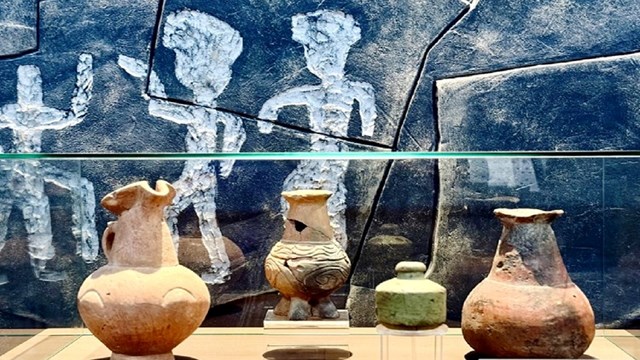
Archaeological artifacts from the Oghuz period introduced in Kazakhstan
Archaeological artifacts from the Oghuz period introduced in Kazakhstan
Ashat Saylau, a specialist at the Regional History Museum of Kyzylorda Province, said that the exhibited artifacts provide information about the cultural heritage of the Oghuz Turks who lived around the Syr Darya River in the current territory of Kazakhstan between the 7th and 11th centuries.
An international exhibition titled "Traces of the Oghuz Steppe Culture" was opened at the National Museum of Kazakhstan.
The opening ceremony, attended by guests from Turkic states, also attracted great interest from the museum’s local and foreign visitors.
The exhibition featured over 120 historical artifacts discovered as a result of archaeological excavations in ancient Oghuz cities located around the Syr Darya River in southern Kazakhstan.
Ashat Saylau, a specialist at the Regional History Museum of Kyzylorda Province, said that the exhibited artifacts provide information about the cultural heritage of the Oghuz Turks who lived around the Syr Darya River in the current territory of Kazakhstan between the 7th and 11th centuries.
Saylau emphasized that the civilized coins displayed in the exhibition reflect the Oghuz understanding of statehood, while the ceramics designed in various forms explain their worldview, stating, "The Oghuz established a settled civilization in the lower part of the Syr Darya River. They built cities especially surrounded by high fortresses. In fact, the foundations of developed cities of the Golden Horde era, such as Jankent, Sighanak, and Jent, were laid by the Oghuz."
Ashat Saylau added that archaeological excavations are currently ongoing in the ancient Oghuz city of Jankent.
Bülent Gönültaş, Deputy Director General of Cultural Heritage and Museums at the Turkish Ministry of Culture and Tourism, who attended the opening ceremony, expressed his pleasure in being part of the Oghuz exhibition at the National Museum of Kazakhstan, saying, "As you know, the Oghuz are our ancestors who spread from Central Asia to Anatolia, including Syria and Iraq. Our roots go back to the Oghuz. Today, artifacts uncovered during archaeological excavations of the Oghuz are exhibited in the museum. In this context, we thank everyone who contributed, especially the National Museum of Kazakhstan."
Gönültaş emphasized that the exhibition is important for passing on such shared cultural heritage to future generations.
Dr. Barış Cavid Mövsümlü, General Coordinator of the TURKSOY Museums Union, stated that since its establishment in 2022, they have made great efforts to bring together and develop museum activities in the Turkic world.
Mövsümlü thanked Berik Abdigaliuly, Director of the National Museum of Kazakhstan, for hosting such a meaningful event.
After the opening ceremony, a scientific seminar on the Oghuz cultural heritage of the steppe was also held.